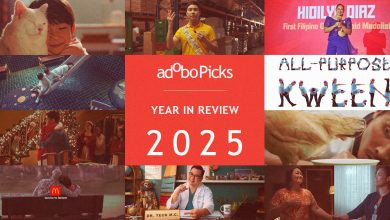MANILA, PHILIPPINES — We’re one step closer to finding out which two young creatives are coming out on top and flying to Vegas for the Creative LIAisons Program. Last May 03, the esteemed jury of the adobo LIA Young Creative Competition 2023 gathered at The Astbury to judge entries sent in by talented and passionate young creatives from across the industry.
The adobo LIA Young Creative Competition 2023 is organized by adobo Magazine in partnership with the London International Awards, and this year’s theme is “A Spotlight on Philippine Creativity.” With this focus in mind, the 2023 creative brief prompted the entrants to come up with creative solutions that could elevate the industry and be an answer to how the Philippines can become Asia’s top creative economy.
 On the creative brief, Jury Head and Founder and CEO of Octopus & Whale Joey David-Tiempo said, “Philippine creativity has always been under attack, not just by the world but also because of certain things that are happening in the country.”
On the creative brief, Jury Head and Founder and CEO of Octopus & Whale Joey David-Tiempo said, “Philippine creativity has always been under attack, not just by the world but also because of certain things that are happening in the country.”
“We created this brief to be able to find and determine these two people who will rise up to take on the challenge,” she added.
Joey and the rest of the jury definitely were not disappointed with the response to the brief. Adobo LIA received a whopping 145 entries from young creatives across the Philippines’ creative economy, with agencies TBWA\ Santiago Mangada Puno, NuWorks Interactive Labs, Inc., Publicis JimenezBasic, Dentsu Creative Philippines, Wunderman Thompson Philippines, Ogilvy Manila, and Propel Manila having the most number of entrants.
This year’s batch also delivered solutions addressing a wide array of sectors across the entries. While ideas surrounding the expected areas of advertising and visual arts made a great showing among the entries, the most popular creative industries being addressed across the works also included creative solutions for the music, culinary, new media and gaming, and literary scenes.
The relevant and urgent theme made it clear how crucial it was to find the right winners to award the slots for this year’s Creative LIAisons Program, and the jury didn’t take that responsibility lightly. With the number of entries, the impressive diversity across the ideas, the many groundbreaking works submitted, and countless nuances to take into account while judging, the jurors’ extensive deliberations extended late into the night until they found the deserving finalists, and more importantly, which ideas deserved the metals.

“We are awarding the two young creatives that will take on this industry in the future as creative leaders,” Joey expressed. “As we send them off to be mentored in Las Vegas, it’s very important that they are concerned and have genuine care for this industry.”
The dedicated jury that joined Joey during the deliberations at The Astbury included Havas Ortega Group Executive Creative Director Angie Tijam-Tohid, TBWA\SMP – JUICE Executive Creative Director Cj de Silva-Ong, Dentsu Creative Philippines Executive Creative Director Gary Amante, Wunderman Thompson Chief Creative Officer Joe Dy, Homonym Founder & CEO Mike Constantino, BBDO Guerrero Creative Director Nikki Sunga, McDonald’s Philippines VP & CMO Oliver Rabatan, and Seven A.D. Chief Digital Officer Russ Molina. Ali Silao, Publicis JimenezBasic’s Head of Art and the winner of the 2022 adobo LIA Not-So-Young Creative Competition, was also present to judge remotely via Zoom.

After hours of careful deliberation, filled with eye-opening discussions and enlightening insights among the group of industry trailblazers and creative leaders, the jury selected which works stood out to them the most. These included eight finalists, two Silver winners who will get to join the LIAisons Virtual Program, a global one-to-one virtual coaching and networking program, and finally, two Gold winners who will be flying to Vegas as they receive their well-deserved spots at the Creative LIAisons Program.
“As I’ve seen in the entries this year, I see the dedication and the genuine concern of young creatives specific to the creative sectors they are passionate about,” Joey shared. “[Everyone will see that] the ones who were selected to represent the country are those who understand these sectors very very well.”
Are you excited to find out which ideas emerged victorious in the challenge to find the best solutions for elevating Philippine creativity? The finalists and winners will be revealed on May 05, Friday, at the adobo LIA Young Creative Competition 2023: Awards Night.
The Astbury doors open at 4:30 pm for the anticipated event, but the event will also be going live on adobo magazine’s Facebook page at 5:30 pm for those tuning in virtually.








